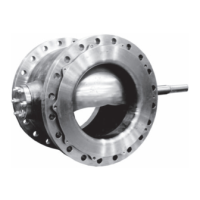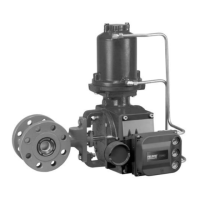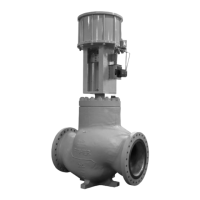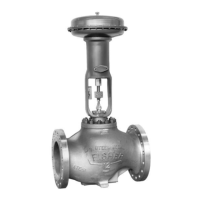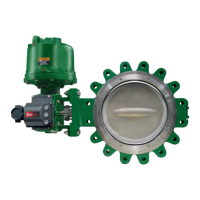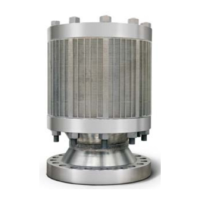Instruction Manual
D101554X012
Vee-Ball Valves
March 2021
8
V200
VALVE
SIZE,
NPS
DIMENSION
A
B
M
Standard
ANSI/ISA
S75.08.02
(1)
CL150
ASME B16.10
(2)
Short (Optional)
Standard
CL150 ANSI/ISA
S75.08.02
(1)
CL150
ASME B16.10
(2)
Short (Optional)
CL300 CL600
mm
1
1-1/2
2
102
114
124
127
165
178
58
64
57
176
189
211
202
240
268
202
224
237
202
224
237
3
4
6
165
194
229
203
229
267
87
92
119
254
286
343
286
321
381
279
305
362
286
343
423
8
10
243
297
292
330
119
151
343
419
394
451
387
‐ ‐ ‐
426
‐ ‐ ‐
Inches
1
1-1/2
2
4.00
4.50
4.88
5.00
6.50
7.00
2.29
2.50
2.25
6.94
7.44
8.31
7.94
9.44
10.56
7.94
8.81
9.31
7.94
8.81
9.31
3
4
6
6.50
7.62
9.00
8.00
9.00
10.50
3.44
3.62
4.69
10.00
11.25
13.50
11.25
12.62
15.00
11.00
12.00
14.25
11.25
13.50
16.25
8
10
9.56
11.69
11.50
13.00
4.69
5.94
13.50
16.50
15.50
17.75
15.25
‐ ‐ ‐
16.75
‐ ‐ ‐
1. IEC 534‐3‐2 face‐to‐face dimensions are equivalent to ANSI/ISA S75.08.02 face‐to‐face dimensions.
2. 150 pound class only.
Maintenance
Valve parts are subject to normal wear and must be inspected and replaced as necessary. The frequency of inspection
and replacement depends upon the severity of service conditions.
Key numbers in this procedure are shown in figures 24, 25, and 26, unless otherwise noted.
WARNING
The Vee‐ball closes with a shearing, cutting motion, which could result in personal injury. To avoid injury, keep hands,
tools, and other objects away from the Vee‐ball while stroking the valve.
Avoid personal injury from sudden release of process pressure. Before performing any maintenance operations:
D Do not remove the actuator from the valve while the valve is still pressurized.
D Disconnect any operating lines providing air pressure, electric power, or a control signal to the actuator. Be sure the
actuator cannot suddenly open or close the valve.
D Use bypass valves or completely shut off the process to isolate the valve from process pressure. Relieve process pressure
from both sides of the valve. Drain the process media from both sides of the valve.
D Vent the power actuator loading pressure and relieve any actuator spring precompression.
D Use lock‐out procedures to be sure that the above measures stay in effect while you work on the equipment.
D Always wear protective gloves, clothing, and eyewear when performing any maintenance operations.
D The valve packing area may contain process fluids that are pressurized, even when the valve has been removed from the
pipeline. Process fluids may spray out under pressure when removing the packing hardware or packing rings.
D Check with your process or safety engineer for any additional measures that must be taken to protect against process
media.
Packing Maintenance
Key numbers in this procedure are shown in figures 24, 25, and 26, unless otherwise noted. A detailed view of the
packing is also shown in figure 5.

